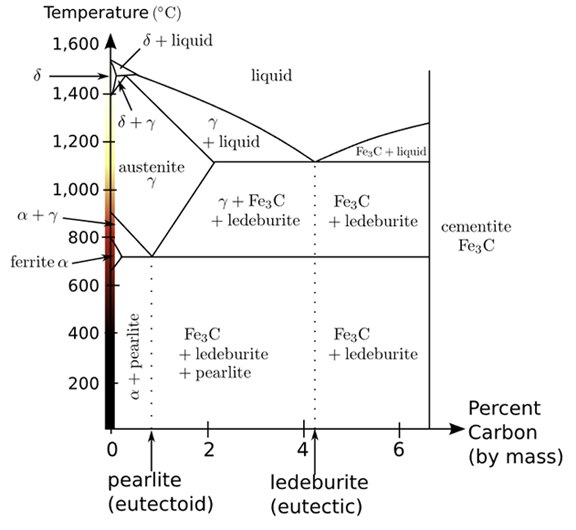
A typical eutectic curve that shows the relationship between temperature, carbon content and crystalline structure for typical steels.


A typical eutectic curve that shows the relationship between temperature, carbon content and crystalline structure for typical steels.
Austenitizing is a process to change the strength and ductility of steel in order to utilize the steel in different applications. Steel is made up of different crystal structures. When heated above a certain high temperature, the crystalline structure will convert to almost 100% austenite. This structure can hold a large amount of carbon within its structure. When the steel is cooled slowly the austenite reverts back to the original crystalline structure of a mixture of pearlite and ferrite. This structure has little strength and has limited uses.
In order to produce steel with excellent strength but the ability to give under stress without cracking (ductility) we trick the steel by heating to the austenitizing region and then quickly cooling the structure to prevent the steel from reverting to mixed crystalline structure. This produces a steel that is so hard and brittle that if impacted it will break like ice. In order to use this steel we temper the piece to allow some conversion of the austenite structure to other components. In this manor we can produce the exact properties we desire in the steel.
The actual metallurgy of this process is much more complicated then I have shown. The quantity of carbon has a huge effect, as do micro alloys such as nickel, chrome and others. Transition curves are produced for each type of chemistry in order to predict the outcome. Professionals spend years to understand these complicated relationships.